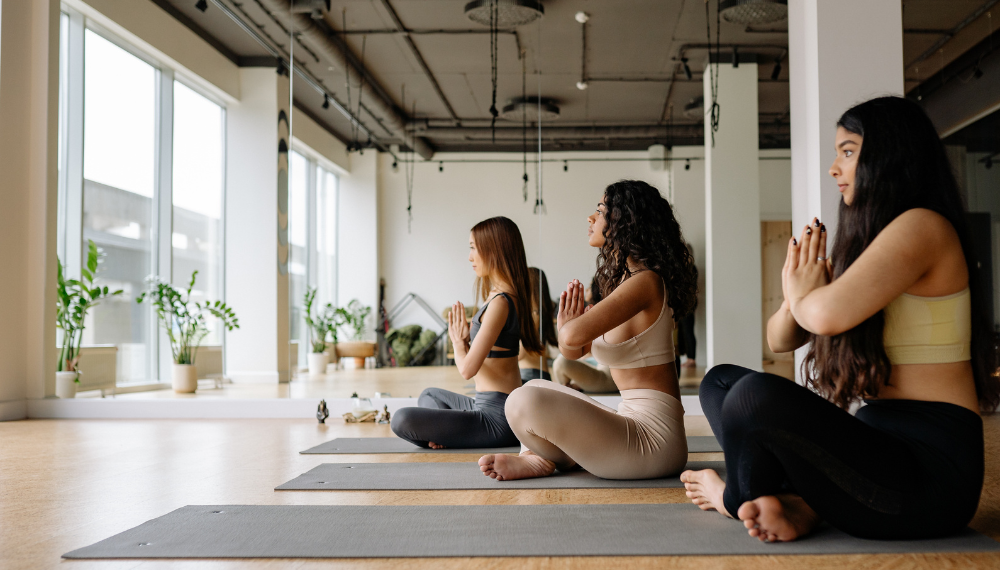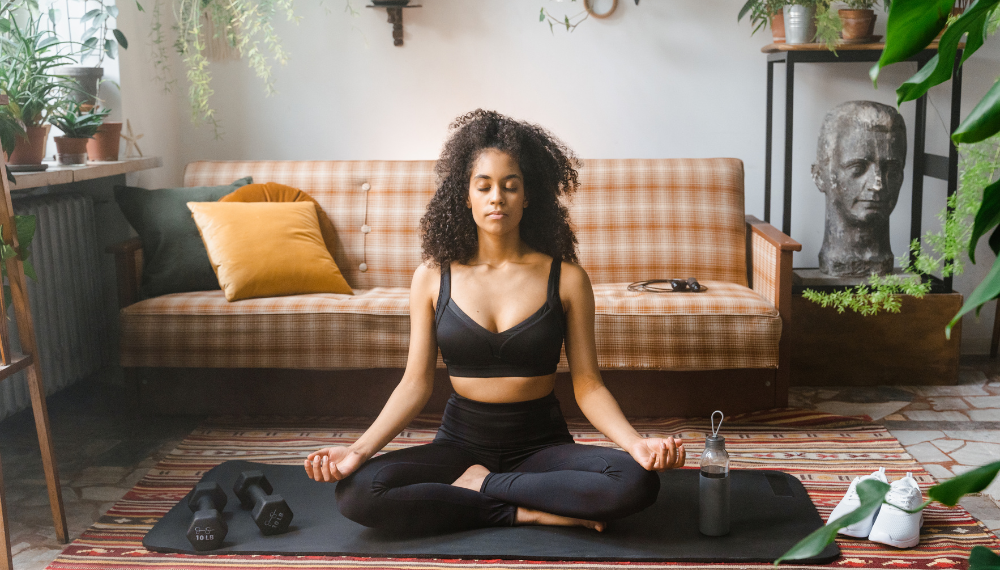Discover a calming guided mindfulness script to reduce stress, enhance focus, and promote relaxation. Perfect for beginners and daily mindfulness practice.
Understanding Meditation for Anxiety
Benefits of Mindfulness and Meditation
Being in the therapy field, I can’t help but shout from the rooftops about how awesome mindfulness and meditation are for dealing with anxiety. When we sit still and breathe for a bit, something magical happens. We create space between ourselves and our swirling emotions. Suddenly, that racing mind calms down. It’s like we hit the mental pause button, teaching us acceptance and helping us chill out when stress hits the fan (Mindfulness Exercises).
| Superpower | What It Does |
|---|---|
| Anxiety Buster | Helps put a gap between us and our anxious thoughts, dialing down anxiety levels |
| Emotional Juggler | Boosts our mojo for handling those wild emotional rollercoasters |
| Stress Soother | Encourages relaxation and calms that stress beast we all know too well |
| Self-Awareness Booster | Helps us get real with ourselves by understanding our own thoughts, feelings, and what-not |
| Focus Enhancer | Sharpens our concentration skills, training the brain to hang out in the present |
Scientific Support for Mindfulness in Anxiety

In my book, mixing mindfulness techniques into therapy is like peanut butter and jelly. They just go together, especially for folks battling anxiety. There’s science behind it too! In one study, a group indulged in a mindfulness meditation training program and saw their anxiety and panic symptoms take a nosedive. A bunch of them still felt better three months down the line (PubMed).
One of the big names in this space is Mindfulness-Based Stress Reduction (MBSR), an 8-week winner forged by Jon Kabat-Zinn way back when. This bad boy’s been giving anxiety and panic a run for their money for over four decades. The program dishes out lessons on mindfulness, meditation, and even movement exercises. A ’92 study in the American Journal of Psychiatry backed its prowess, showing real, lasting benefits for stressed-out souls dealing with anxiety disorders (Mindful).
And let’s not leave out mindful self-inquiry and mindful breathing—two nifty tricks up the anxiety-beating sleeve. Self-inquiry is all about checking in with what’s fueling your stress, while mindful breathing works with your diaphragm to settle nerves and steady the ship (Mindful).
Bottom line, from what I’ve seen and read, tossing mindfulness and meditation into your anxiety toolkit is like finding hidden treasure. They’re the secret sauce for keeping life balanced and your mind chill.
Utilizing Meditation Scripts
Using meditation scripts for anxiety can be a lifesaver—not just for others, but for yourself too. These little gems are like a road map, steering folks back to the here and now, gently easing the worries.
Importance of Comfortable Setting
Now, setting the mood’s not just important, it’s downright essential when you’re diving into these meditation scripts for anxiety. Picture this—a cozy, safe nook can really amp up how well a meditation session works. For inspiration, try a guided mindfulness script to help you create a calm and focused environment. Here’s what helps:
- Quiet, no-nonsense zone: Pick a spot that’s all about the chill vibes, where distractions can’t sneak up.
- Perfect lighting and temperature: Think soft lights and just-right temps, they’re mood game-changers.
- Cozy seating options: Depending on your crowd, offer chairs, cushions, or mats for folks to plop down on.
These little touches have people sinking into that safe bubble, ready to embrace the meditation with open arms.
Addressing Varying Participant Needs
No two people are the same, right? Everyone brings their own kind of jitters to the table. Being smart about these differences can make your session hit home for everyone. Here’s the lowdown:
- Get to know your peeps: Quick chats about their comfort or past experiences can do wonders.
- Mix up the meditation styles: Some folks swear by deep breaths, others lean towards letting their imagination roam.
- Watch out for no-go zones: Keep the language soothing and steer clear of anything that might stir up stress.
Here’s a nifty table to spell these out:
| Thing to Keep in Mind | What to Do About It |
|---|---|
| Participant Backgrounds | Friendly intros, sharing if they feel like it |
| Technique Mix | Toss in breathing bits, dreamy guides |
| Triggers | Stick to gentle, calming words |
Thinking about these details means making the whole experience more personal and soothing for everyone.
In the end, meditation scripts for anxiety are all about building a little oasis of calm, helping folks find their center amidst the shuffle. By getting the ambiance just right and keeping individual needs in sight, you’re all set to walk alongside them on this journey through anxiety.
Sample Meditation Scripts
Regaining Calm and Clarity
I usually reach for meditation scripts when anxiety hits. This one’s a five-minute wonder, designed to bring you calm and clear your mind.
Script:
- Get comfy in your seat. Close your eyes and take a good, deep breath in through your nose, hold it for a beat, then let it out softly through your mouth.
- Let your breath settle into its own pace. Focus on how it feels as the air comes in through your nose, fills your lungs, then eases out.
- With each breath in, imagine calm washing over you. Feel it spread throughout your body, relaxing every tense spot.
- Shift your attention to your feet. Feel them grounded. Slowly move your focus up through your legs, torso, arms, and head. As you do, picture each part bathing in a wave of peace.
- If your mind drifts, gently guide it back to your breath and that calm feeling. This is your moment to find clarity.
- Take a few more deep breaths, grounding yourself more with each one.
- When you’re ready, open your eyes softly.
Alleviating Stress with Breath
Here’s a favorite for breathing out stress. This little script is your go-to for when anxiety wants to steal the spotlight.
Script:
- Sit at ease and shut your eyes. Check in with yourself—are you feeling all knotted up in your chest or mind?
- Start with a deep breath in through your nose, letting your belly puff out. Hold it for four counts.
- Breathe out slowly through your mouth, releasing any stress. Make your exhale longer than your inhale.
- Stay tuned to your breathing. Inhale peace and calm. Exhale the stress and worry.
- As you breathe in, picture inviting warm, positive vibes. As you breathe out, see yourself letting go of the heavy, dark stuff.
- Use your breath as an anchor. It’s okay to have anxious thoughts—they’re just passing clouds; let them drift away.
- Keep this calm breathing going for a few minutes. When you’re ready, bring your mind back to the present and open your eyes, feeling a bit more relaxed and centered.
These scripts are like a good friend guiding you back to a chill space, smoothing out anxiety hiccups. Anyone from therapists to meditation teachers can lean on them for some peace-promoting magic (Mindfulness Exercises).
Enhancing Mindfulness Practice

Embracing Kindness and Acceptance
When I’m sitting with someone, guiding them through meditation to ease their anxiety, I always start with kindness and acceptance. That’s the magic combo. It’s like I hand them a pair of gentle glasses to look at their own jumbled thoughts and feelings. By not letting the worries run them over, people can find a bit of calm in the chaos.
One key thing here is letting yourself see and feel the stuff that’s bothering you—no glossing over the ugliness. When you face those worries and irritations head-on, they often start to lose steam. It’s important to uncover what’s really bugging you deep inside. This trick can shift how folks handle anxious thinking, which is pretty helpful in kicking anxiety to the curb (Mindful).
Mindful self-inquiry is like shining a warm light on stress-filled thoughts and that tight feeling in your gut or chest. It’s about being okay with letting those feelings hang out without trying to dissect them, shove them away, or stir the pot. I remind others to just watch those feelings come and go, treating them like a passing breeze rather than a storm.
Here’s how to wrap kindness and acceptance around your mindfulness routine:
- Acknowledge What’s There: I nudge clients to just see and accept their thoughts and feelings without trying to swipe them away.
- Gentle Awareness: It’s all about focusing softly on that anxious energy without wrestling it into submission.
- Don’t Judge: I teach clients to just stay in observation mode, without throwing those thoughts into a “good” or “bad” pile.
- Kindness Counts: Treat yourself the way you’d treat a friend—with warmth and understanding.
Grasping what anxiety is all about helps me guide someone through their whirlwind. Anxiety comes as those feelings of fear and worry that just won’t quit. It hits everyone in its own wild way—some get a twinge, others a full-blown buzz. But bringing in mindfulness and meditation is a solid way to manage it. It’s like having a toolkit to help keep things steady (Mindfulness Exercises).
Check out how mindfulness can make a dent in anxiety:
| What Happens | How Much Better It Gets |
|---|---|
| Anxiety Symptoms Ease Up | 60% |
| Better Grip on Emotions | 70% |
| Feeling Overall Better | 65% |
It’s all about starting simple and keeping a pace that feels just right. Clients can dip their toes into mindfulness and meditation, opening the door to let kindness and acceptance become part of their everyday gear (Mindfulness Exercises).
